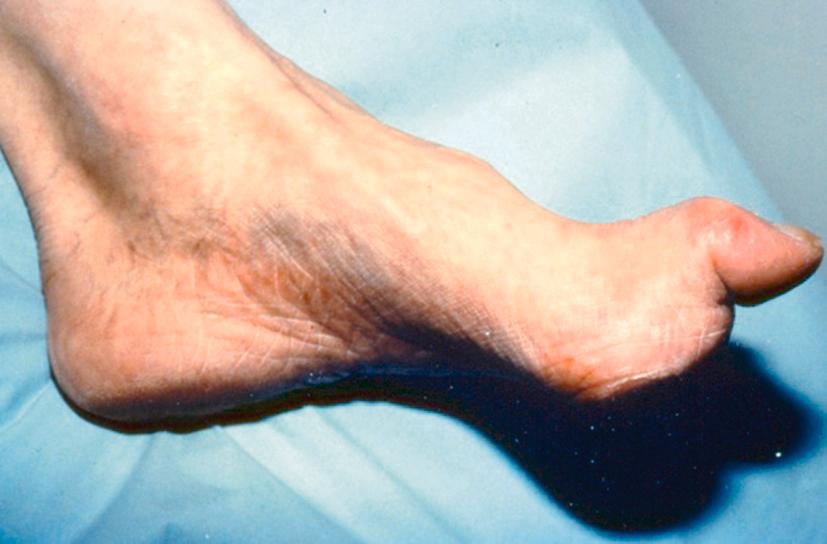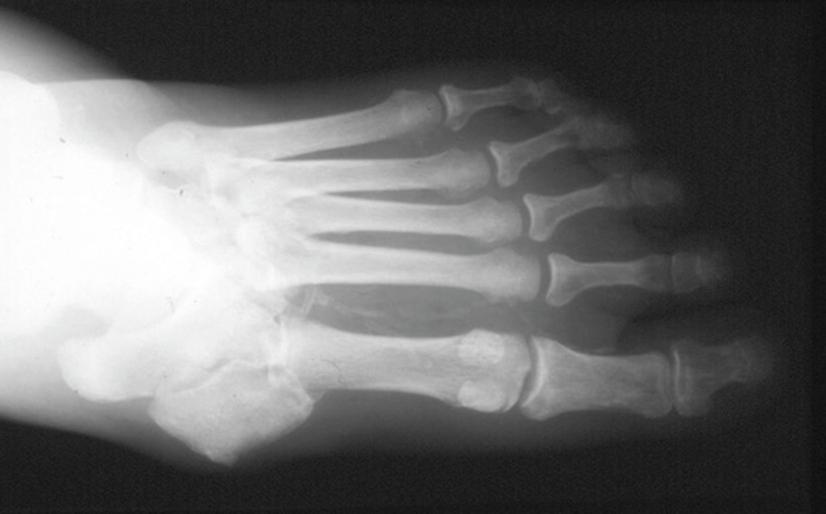Physical Address
304 North Cardinal St.
Dorchester Center, MA 02124
Foot problems are one of the most common complications of diabetes, with 15% of patients developing a foot ulcer in their lifetime. They account for more hospital admissions than other complications of diabetes and are associated with high mortality, worse than many common forms of cancer.
The term diabetic foot disease actually encompasses a number of different conditions, including peripheral sensory neuropathy and/or neuropathic pain, peripheral artery disease (PAD), ulceration, infection including osteomyelitis and Charcot neuroarthropathy. Unfortunately, people with diabetes are still eight to 24 times more likely than those without diabetes to undergo a lower limb amputation. It is thought that around 85% of those amputations could be avoided by early detection and involvement of a specialist foot team, as the majority of amputations are preceded by ulceration.
The estimated global prevalence of diabetes in 2019 was approximately 463 million adults and by 2045, this is estimated to rise to 700 million, and, as a consequence, the burden of foot ulceration is also likely to increase. In 2002 in a study from the north-west of England, the annual incidence of foot ulceration was reported to be 2.2% among 10 000 community-based patients with type 2 diabetes, a similar incidence to an earlier US study.
The main risk factors for the development of foot ulcers in diabetes are peripheral neuropathy and PAD, either alone or in combination with deformity. In the UK, new Public Health England data show that the annual number of diabetes-related amputations in England is now over 7000 a year and it is now estimated that every 27 seconds, a leg is lost to diabetes somewhere in the world.
The prevalence of diabetic peripheral sensory neuropathy (DPSN) is approximately 30% in hospitalised diabetes patients and 20–30% in community-based patients. It is now increasingly accepted that it is one of the earliest complications to develop in diabetes, often developing in those with prediabetes. The main clinical features of DPSN include symmetrical, predominantly sensory deficits in the distal lower extremities, and neuropathic pain. The development of neuropathy is linked to the duration of diabetes and poor glycaemic control over many years as well as height, hypertension, dyslipidaemia, obesity and possibly smoking. Annual foot examination is recommended to identify DPSN as it is a risk factor for ulceration in all patients with diabetes, and appropriate regular foot review should be instituted depending on the result.
Not every patient with sensory diabetic neuropathy will describe symptoms of painful peripheral neuropathy (PPN). Although the two conditions may coexist, this is not inevitable, with one study showing painful symptoms occurring in 26% of patients without neuropathy (Neuropathy Disability Score [NDS] ≤2) and 60% of patients with severe neuropathy (NDS >8). The symptoms of PPN can be extremely disturbing, and include symptoms such as burning, altered temperature perception, paraesthesia or allodynia (touch perceived as a painful stimulus), or numbness or deadness in the limb. Symptoms of neuropathy can be differentiated from pain caused by arterial disease by the nocturnal exacerbations, lack of relationship to exercise and location of symptoms, although this is not always straightforward.
Coexistent autonomic neuropathy causes a reduction in sweating in the skin and open arteriovenous shunts. Although this appears to increase blood flow to the limb, with easily bounding pulses, the consequence of the shunting of blood away from skin capillaries results in functional local skin ischaemia. The neuropathic foot therefore appears warm with bounding pulses but has dry, often cracked, skin.
Motor neuropathy mainly affects the intrinsic muscles of the foot, causing wasting (guttering between the metatarsals) and altered foot shape, with clawed toes and prominent metatarsal heads ( Fig. 5.1 ). The subsequent deformity, particularly in conjunction with DPSN, may lead to unnoticed trauma from ill-fitting footwear. Neuropathy is responsible for a high proportion of foot ulcers. In the Eurodiale study, which looked at 1232 patients across 14 European centres, peripheral neuropathy was present in 86% of patients undergoing treatment for foot ulcers.

The diagnosis of DPSN, particularly for the assessment of foot ulceration risk, is usually done by clinical examination, which reveals a ‘stocking’ distribution of sensory loss to one or more of pain, pressure, temperature and vibration modalities. Quantitative sensory testing can be performed for perception of vibration, pressure and temperature thresholds, but the perception of pressure threshold is the simplest and most commonly used in clinical practice. A nylon monofilament is used; by pressing against the skin until it buckles by about 1 cm, a load of 10 g of pressure can be accurately applied. Patients unable to feel this at a number of pre-specified sites of the foot are at approximately fourfold increased risk of ulceration. This test can be simplified further by using the Ipswich Touch test, a test with a good sensitivity and specificity compared with the monofilament and dispensing with the requirement for specific equipment.
Atherosclerotic vascular disease is probably present in all patients with a long-standing history of diabetes.
The distribution of vascular disease in the lower limb is thought to be different in patients with diabetes, with more frequent involvement of vessels below the knee. One study of patients referred for angiography showed no difference in proximal disease (iliac, femoropopliteal vessels) but distal disease (calf vessels) was twice as high in patients with diabetes as those without. In clinical practice, it is not uncommon to see patients with extensive PAD of the posterior and anterior tibial arteries. Long calcified occlusions of these vessels are typical. There is frequently relative sparing of the peroneal artery and digital vessels. The distribution of disease has important consequences for revascularisation strategies. Bypasses are often required into the foot and angioplasty may be difficult because of the long length of occlusion and calcified nature of the atherosclerotic plaques.
Patients with diabetes and PAD may present with intermittent claudication; however, because of coexistent sensory peripheral neuropathy, the symptoms of vascular disease are frequently absent. The first clinical presentation may unfortunately therefore be foot ulceration.
Peripheral neuropathy, and other comorbidities, have an influence on the results of investigations recommended to investigate PAD and the choice of investigation will also differ depending on the clinical scenario. The International Working group of the Diabetic Foot (IWGDF) suggests that all patients’ feet are examined at least annually for the presence of PAD and that at a minimum, this should include taking a relevant history and manually palpating foot pulses. If however, the person with diabetes has a foot ulcer, the IWGDF recommends that pedal Doppler arterial waveforms in combination with ankle systolic pressure and systolic ankle brachial index (ABI) or toe systolic pressure and toe brachial index (TBI) measurement are done. This is because the presence of pedal pulses on clinical examination does not reliably exclude PAD in a person with diabetes. It is recognised however, that no single test has been shown to be optimal to exclude PAD, and there is no definite threshold value above which PAD can reliably be excluded. However, PAD is a less likely diagnosis in the presence of ABI, 0.9–1.3; TBI ≥0.75; and triphasic pedal Doppler waveforms. The suboptimal performance of these bedside tests may relate to the frequent presence of arterial calcification secondary to peripheral neuropathy and/or chronic kidney disease, which will falsely elevate the measurement even within the normal range ( Fig. 5.2 ). Transcutaneous oxygen tension (measured by an electrode placed on the foot) accurately reflects skin oxygenation and has been used to determine the severity of ischaemia and the likelihood that an ischaemic ulcer will heal; however, as the result depends on the assumption of capillary dilatation when the sensor is heated to a pre-specified temperature, then once again the presence of neuropathy may affect the result as capillary dilatation may be altered in the presence of autonomic neuropathy.

The most important cause of foot ulceration is loss of protective pain sensation, permitting ‘painless’ repetitive trauma and tissue injury particularly in those with deformity. Pedal plantar pressures can be measured by a number of methods, both dynamic and static. Patients with peripheral neuropathy and particularly patients with foot ulcers have high plantar pressures, although high pressures alone in the absence of insensitivity do not lead to ulceration. Frykberg et al. used an F-scan pressure mat system and identified patients at risk of ulceration with foot pressures >6 kg/cm 2 . Stacpoole-Shea et al. studied an in-shoe pressure analysis system and demonstrated its ability to predict potential sites for foot ulceration with a sensitivity of 83% and a specificity of 69%.
Neuropathy and altered proprioception, and small-muscle wasting can, in themselves, lead to alteration of the foot architecture and shape, resulting in clawing of the toes, prominent metatarsal heads and a high arch, resulting in foot pressure changes. To some extent, this can be reviewed clinically and raises suggestions as to where ulcers are likely to occur on the foot. The more severe deformities associated with Charcot neuroarthropathy, with joint dislocation and bony deformities, can also result in increased foot pressures and subsequent ulceration.
Limited joint mobility is a further contributing factor to elevated plantar pressures. Chronic hyperglycaemia results in glycosylation of proteins and, when collagen is involved, the collagen bundles become thickened and cross-linked. This alters the mechanics of walking and is strongly associated with high plantar pressures.
Neuropathy alone does not usually lead to spontaneous ulceration, the precipitating factor commonly being from some traumatic event, including rubbing from inappropriate or ill-fitting footwear. In the North West diabetes study, approximately half the ulcers were precipitated by problems with footwear. The presence of callus (produced in response to pressure) may exacerbate the problem by increasing pressure further. Removal of callus significantly reduces foot pressures, and should be done regularly by an experienced podiatrist.
Although measurement of foot pressures can predict risk of ulceration with a degree of accuracy, it requires equipment that may not be available in all centres. Good clinical examination that inspects foot shape and identifies the presence of callus can provide very valuable information. In particular, the presence of haemorrhage into callus is a pre-ulcerative phenomenon and requires urgent attention. Footwear, and the wear pattern of the footwear, should also be inspected as part of this assessment.
Become a Clinical Tree membership for Full access and enjoy Unlimited articles
If you are a member. Log in here